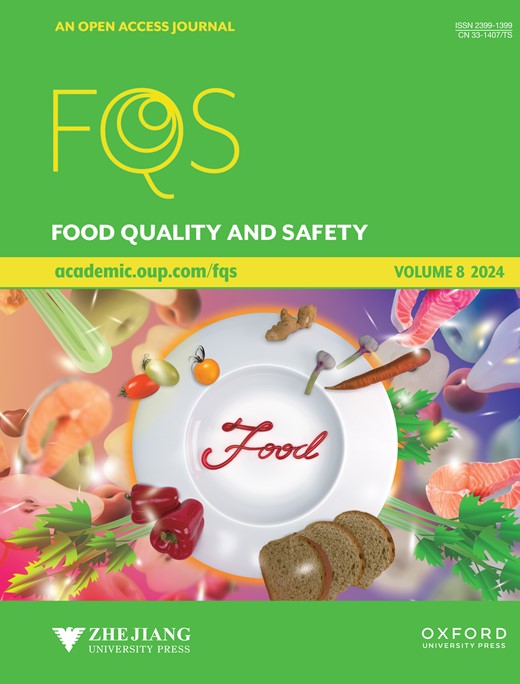Prediction and determination of mildew grade in grain storage based on FOA-SVM algorithm
IF 4.4
3区 农林科学
Q2 FOOD SCIENCE & TECHNOLOGY
引用次数: 0
Abstract
Grain mildew is a significant hazard that causes food loss and poses a serious threat to human health when severe. Therefore, its effective prediction and determination of mildew grade is essential for the prevention and control of the mildew and global food security. In the present study, a model for predicting and determining the mildew grade of rice was constructed using Logistic regression, BP neural network and GS-SVM (a grid search-based support vector machine algorithm) based on laboratory culture data and actual data from granary respectively. The results show that the GS-SVM model has a better prediction effect, but the model cannot automatically adjust the parameters and is more subjective, and the accuracy may decrease when the data set changes. Therefore, this paper establishes a new model for a support vector machine based on a fruit fly optimization algorithm (FOA-SVM) which can achieve automatic parameter search and automatically adjust its parameters to find the best result when the data set changes, with a strong ability of self-adjustment of parameters. In addition, the FOA-SVM converges quickly and the model is stable. The results of this study provide a technical method for early identification of mildew grade during grain storage, which is beneficial for the prevention and control of rice mildew during grain storage.基于FOA-SVM算法的粮库霉变等级预测与确定
粮食霉变是造成粮食损失的重大危害,严重时对人类健康构成严重威胁。因此,它对霉菌等级的有效预测和确定对于预防和控制霉菌以及全球粮食安全至关重要。本研究基于实验室培养数据和粮仓实际数据,分别采用Logistic回归、BP神经网络和GS-SVM(一种基于网格搜索的支持向量机算法)构建了水稻霉变等级的预测和判定模型。结果表明,GS-SVM模型具有较好的预测效果,但该模型不能自动调整参数,主观性更强,当数据集发生变化时,预测精度可能会降低。因此,本文基于果蝇优化算法(FOA-SVM)建立了一种新的支持向量机模型,该算法可以实现参数的自动搜索,并在数据集发生变化时自动调整参数以找到最佳结果,具有较强的参数自调整能力。此外,FOA-SVM收敛速度快,模型稳定。本研究结果为储粮期间霉菌等级的早期鉴定提供了一种技术方法,有利于储粮期间水稻霉变的防治。
本文章由计算机程序翻译,如有差异,请以英文原文为准。
求助全文
约1分钟内获得全文
求助全文
来源期刊

Food Quality and Safety
FOOD SCIENCE & TECHNOLOGY-
CiteScore
7.20
自引率
1.80%
发文量
31
审稿时长
5 weeks
期刊介绍:
Food quality and safety are the main targets of investigation in food production. Therefore, reliable paths to detect, identify, quantify, characterize and monitor quality and safety issues occurring in food are of great interest.
Food Quality and Safety is an open access, international, peer-reviewed journal providing a platform to highlight emerging and innovative science and technology in the agro-food field, publishing up-to-date research in the areas of food quality and safety, food nutrition and human health. It promotes food and health equity which will consequently promote public health and combat diseases.
The journal is an effective channel of communication between food scientists, nutritionists, public health professionals, food producers, food marketers, policy makers, governmental and non-governmental agencies, and others concerned with the food safety, nutrition and public health dimensions.
The journal accepts original research articles, review papers, technical reports, case studies, conference reports, and book reviews articles.
 求助内容:
求助内容: 应助结果提醒方式:
应助结果提醒方式:


